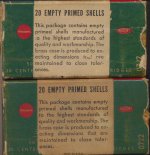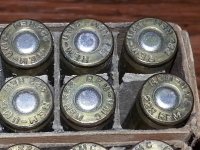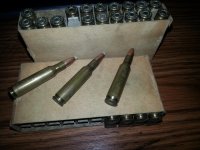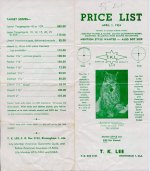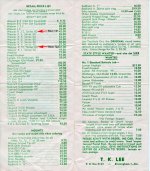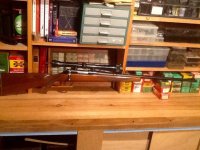HorizontalMike
US Veteran
Here are a few images of some Remington .222 Reload ammo dating back to ~1955-1959, that I have from when my father was reloading our (now mine) Remington 722 rifle. The Remington box itself states that they are "empty primed shells" from Remington.
Five or six years ago I took the rifle to the range and actually fired ~10rd of this old ammo at a 200yd target. I had not fired this .222 rifle in almost 50yr and YES I feel guilty about that

That said, I managed to get groupings of ~2-3in, not bad for having a 50yr resp-id from this gun...
Anyway, this Remington 722 has an old "original" Weaver K 10, Series 60 scope on it that my father bought in 1954. If you recall anything about this scope, you will know that the cross hairs actually float, so if you move your head while looking through the scope you will see the cross hairs move/point differently.
Five or six years ago I took the rifle to the range and actually fired ~10rd of this old ammo at a 200yd target. I had not fired this .222 rifle in almost 50yr and YES I feel guilty about that
That said, I managed to get groupings of ~2-3in, not bad for having a 50yr resp-id from this gun...
Anyway, this Remington 722 has an old "original" Weaver K 10, Series 60 scope on it that my father bought in 1954. If you recall anything about this scope, you will know that the cross hairs actually float, so if you move your head while looking through the scope you will see the cross hairs move/point differently.


